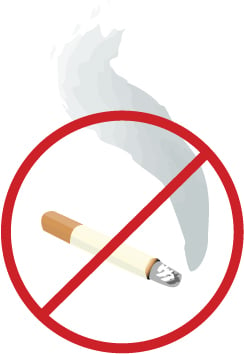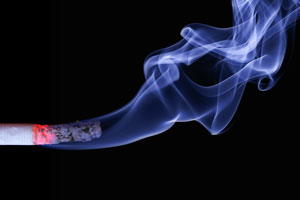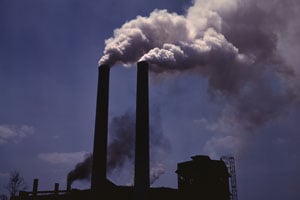 Do smoky cigars, lingering pet odors, or strong fumes pollute the air in your home? Although odors and foul smells are a part of life, they don’t need to be a part of your indoor air. Many people ask, ‘Do air purifiers eliminate odors?’ The short answer is yes, but it’s not that simple. All air purifiers are not created equally, and certain types of filter media are exceptionally good at removing odors, while other filters will not remove any. Overall, a HEPA air purifier can dramatically improve your indoor air quality, but it is important to make sure you get a model that fits your needs and that will work efficiently in the size of your space.
Do smoky cigars, lingering pet odors, or strong fumes pollute the air in your home? Although odors and foul smells are a part of life, they don’t need to be a part of your indoor air. Many people ask, ‘Do air purifiers eliminate odors?’ The short answer is yes, but it’s not that simple. All air purifiers are not created equally, and certain types of filter media are exceptionally good at removing odors, while other filters will not remove any. Overall, a HEPA air purifier can dramatically improve your indoor air quality, but it is important to make sure you get a model that fits your needs and that will work efficiently in the size of your space.
Anyone with small children, pets, or a smoker in the house knows all too well that room deodorizers and air fresheners only mask the smell temporarily and don’t solve your real air cleaning needs. You’re left buying more and more and more to constantly mask offending odors. To gain fresh, clean air, the odors in your home must be neutralized and cleaned completely. Odors like strong cooking smells, chemical fumes, and tobacco smoke are particularly dangerous for those that suffer from asthma, allergies, COPD, or MCS. As the air reaches the lungs, these bothersome odors and fumes trigger allergic and asthmatic reactions, having a negative effect on your health.
We represent the top brand air purifier and air cleaner manufacturers including Austin Air, Blueair, Aeris Health, and AirPura. Each of these brands offer a wide range of products that not only target allergens like pollen, dander, and mold spores, but they also utilize specialized filter media to adsorb odors and actually remove them from the air you breathe.
When deciding on which air purifier will be the most effective against household gases, odors and fumes, you first need to consider the amount of air that each air purifier can effectively process. The CADR, or Clean Air Delivery Rate, is used to measure the overall effectiveness of an air purifier and is tested and certified by the Association of Home Appliance Manufacturers (AHAM).
As air cycles through the air cleaner, the CADR measures the volume of air that is actually moving through the system, as well as the percentage and size of the particles that the air purifier is removing. CADR tests for pollutants like tobacco smoke, dust and pollen. These tests determine, in cubic feet per minute (CFM), how effective the air cleaner is at removing specific pollutants from the air.
 CADR results are recognized as accurate and impartial measurements by the U.S. Environmental Protection Agency (EPA) and the American Lung Association. Although some manufacturers use the air exchange rate to qualify their air cleaners, it is not comparable to the CADR tests. Air exchange rates only indicate the total volume of air that is processed by the air purifier in a given time and does not account for the particles being filtered or the overall effectiveness of the air purifier. Keep in mind that CADR is only one element to consider when selecting an air purifier. Many manufacturers are not a part of the AHAM trade association, nor do they submit their products for testing. CADR results have traditionally skewed in favor of ozone generators and ionizers, and thus should be taken for what they are—one of the few impartial measurements of air purifier effectiveness.
CADR results are recognized as accurate and impartial measurements by the U.S. Environmental Protection Agency (EPA) and the American Lung Association. Although some manufacturers use the air exchange rate to qualify their air cleaners, it is not comparable to the CADR tests. Air exchange rates only indicate the total volume of air that is processed by the air purifier in a given time and does not account for the particles being filtered or the overall effectiveness of the air purifier. Keep in mind that CADR is only one element to consider when selecting an air purifier. Many manufacturers are not a part of the AHAM trade association, nor do they submit their products for testing. CADR results have traditionally skewed in favor of ozone generators and ionizers, and thus should be taken for what they are—one of the few impartial measurements of air purifier effectiveness.
Air cleaners utilize various methods of filtration for neutralizing and cleaning the awful odors that can be found in your indoor air. Activated Carbon Filters are the most widely used type of filter to remove gases, odors, and chemical toxins from the air. These filters contain carbon that is basically charcoal. When charcoal is treated with oxygen, millions of tiny pores between the carbon atoms form, enabling the activated carbon to adsorb odorous substances from gases or liquids.
The term “adsorb” refers to the process by which the material attaches itself to the charcoals by way of chemical attraction. Large surface areas with tiny pores of activated charcoal attract odors, gases, and chemical toxins, and the pores trap these impurities. In this process, odor and chemical molecules actually bind to the carbon. As the carbon filter becomes full with airborne contaminants, the charcoal becomes less effective, thus requiring a filter change. Impregnated carbon filters contain an additional chemical (a chemisorbent), that allows the filter to eliminate Volatile Organic Compounds (VOCs) in addition to odors and fumes.
 AirPura Air Purifiers offer a variety of air cleaners that are especially equipped to remove VOCs, offensive odors, smoke, and smog. With an optional UV light to kill bacteria and sterilize the air, the AirPura air purifiers are comprised of an all-metal housing that does not off-gas, plus the filtration process and components do not produce any ozone. AirPura air purifiers that remove odors offer exceptionally quiet, heavy-duty air cleaning for both industrial and residential settings.
AirPura Air Purifiers offer a variety of air cleaners that are especially equipped to remove VOCs, offensive odors, smoke, and smog. With an optional UV light to kill bacteria and sterilize the air, the AirPura air purifiers are comprised of an all-metal housing that does not off-gas, plus the filtration process and components do not produce any ozone. AirPura air purifiers that remove odors offer exceptionally quiet, heavy-duty air cleaning for both industrial and residential settings.
HEPA (High Efficiency Particulate Air) filters, by definition, are required to filter at least 99.97% of all airborne particles as small as 0.3 microns, including dust, pollen, and pet dander. However, the size, material, and construction of the HEPA filter media will determine the amount of particulates that will be filtered. If the filtration media is too small, some ultra-fine particles like foul odors and chemical fumes can be missed.
To tackle odor control, HEPA air purifiers usually combine the HEPA filter with additional filtration systems. Manufacturers like Austin Air combine the HEPA filtration technology with their own carbon/zeolite filter to effectively remove airborne pollutants and lingering odors and smells from the air. The carbon/zeolite filter is impregnated with potassium iodide (in the HealthMate Plus air purifier) for enhanced removal of chemically-reactive gases, providing your home with clean, healthy air that is free of allergens, toxins, and odors.
Charged Media filters are also effective for removing nasty odors from the air. Through the use of electrostatic energy and synthetic fiber filters, many charged media filters can collect particles as small as 0.1 microns. The media filter is made from synthetic fibers that are charged through the manufacturing process—these fibers attract airborne contaminants electrostatically before trapping them inside of the fibers of the filter.
However, charged media filters lose their charge frequently and become less effective after every use, requiring a filter replacement to regain efficiency. In fact, some charged media filters emit ozone, a dangerous lung irritant that pollutes the air. You should not use charged media filters if you suffer from allergies and asthma as it can be dangerous for your health.
Some odor air purifiers, like Blueair air purifiers, offer optional filters for the removal of smoke, odors, and gases. Known for their stylish and sleek designs, Blueair air purifiers feature low energy consumption and easy-to-replace filters. With either a Smokestop filter or a particle and gas filter, Blueair air purifiers remove 99.97% of particles down to 0.1 microns in size, and they don’t emit ozone.
Some Aeris Health Air Purifiers are similar to this. Utilizing a blend of activated carbon and oxidizing elements, Aeris Health’s carbon filters in the Aeris Aair Medical Pro HEPA Air Purifier and Aeris Aair Gas Pro Air Purifier can adsorb and oxidize odors, eliminating them from your indoor air. While these filters aren’t typically as loaded with carbon as many of the Austin Air or AirPura models, the specialized carbon blend typically targets a broader range of odors and chemical vapor molecules.
Like charged media filters, Electrostatic Precipitators use electrostatic charges to safely clean the air in your space and neutralize odors. As air is pushed through many static prone fibers, electronic cells charge the airborne particles and capture them inside of the collector plates. Electrostatic precipitators do not require filters, so you never have to worry about replacing a filter in your air purifier. Simply wash the collector plates and insert them back into the air purifier to receive fresh, clean air.
In summary, if you’re trying to rid your home of disgusting odors, noxious gases, or foul fumes, do not spray air fresheners in the air, this will only contribute to your indoor air pollution problems. Instead, use an air purifier to maintain clean and healthy air in your home. Your nose will appreciate it!
Once you’ve learned how air purifiers eliminate odors and you want to learn more about air purifiers and cleaning your indoor air, visit any of useful resources.
✔ Air Purifier Buying Guide
✔ Air Purifiers FAQ
✔ Do Air Purifiers Eliminate Odors?
